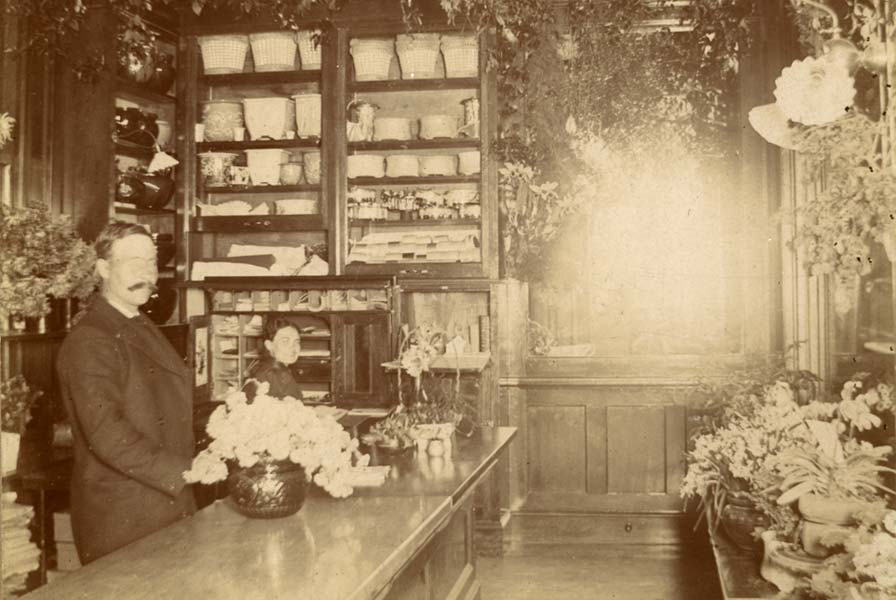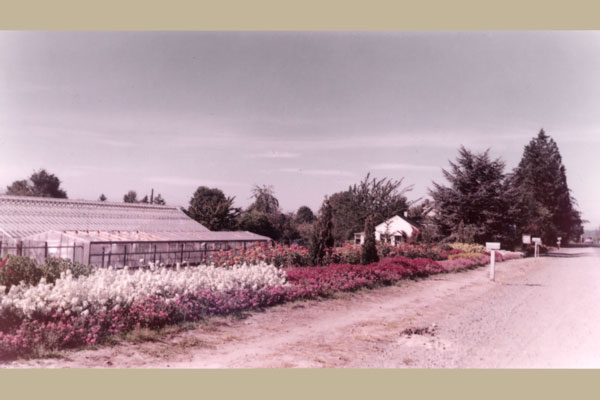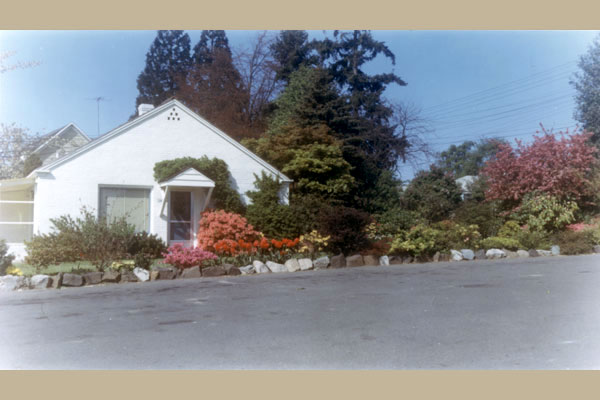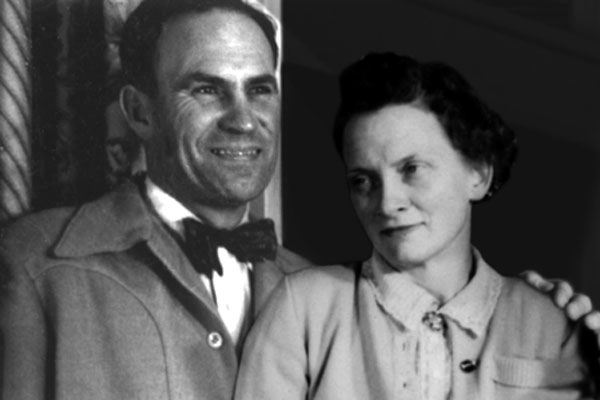Our Story
As we ramp up for an exciting new growing season at Swansons, we’re savoring our history and looking forward excitedly to our future. It’s hard to believe that we have been helping Seattleites beautify their spaces for a century, ever since August and Selma Swanson and their three children arrived here in 1922 to make a new start.
Seattle, like much of the United States in the early 1920s, was a place of optimism and upheaval. These were the Roaring 20s: jazz, flappers, Prohibition, workers’ unrest, and political scrambles, emerging from the trauma of World War I. Downtown Seattle was awash in the Denny Regrade, encompassing optimism and upheaval in one project.
Despite the headlines, however, Seattle was, by most accounts, “a pretty nice place to live,” a relatively quiet (and isolated) burg with wood-frame houses and an Olmsted-designed park system. And of course, people needed flowers.
The Swansons’ story started a few decades earlier, when August emigrated from Sweden, paying his passage to America with money from a pamphlet he wrote about horticulture. He first settled in St. Paul, Minnesota, where he started a greenhouse operation called Swanson’s Land of Flowers in 1888. There he met Selma, the owner of a small local flower shop. The two married, combined their businesses, and began to raise a family.
Around 1920, they left Minnesota for the warmer climes of southern California, purchasing farmland in Altadena to grow begonia bulbs for the wholesale trade. But just as they were getting started, a harsh cold snap (rare, but not unheard of down there) wiped out their crop.
In 1922, they decided to try again, this time in Seattle, near the Scandinavian enclave of Ballard. Legend has it that they met a widow who owned ten acres of land and a small cottage on a gravel road (15th Avenue NW), and struck a deal, trading their California farm for her property.
They planted fields, built a couple of greenhouses and a larger home next to the cottage, and Swanson’s Land of Flowers was back in business by 1924. They grew bulbs for begonias, lilies, irises, and dahlias. They planted trees, including two sequoia saplings along 15th Avenue. They hired friends, neighbors, high school kids, and interns from Sweden, Denmark, and other countries to help out.
To weather the Depression of the 1930s, they grew popular cut flowers of the era – snapdragons, gladiolus, summer chrysanthemums, sweet peas, and violets – as well as houseplants and other exotics. One of the Swanson sons, Ted, recalled his job traveling downtown by streetcar or bicycle to sell cut flowers to florists.
In 1940, Ted Swanson inherited the business with his wife, Frances, trading homes with his parents in a symbolic ‘old country’ transfer of the business. They gradually transformed Swanson’s Land of Flowers into a retail business selling potted and bedding plants, indoor varieties, and many types of rare plants.
After World War II, Seattle residents were venturing into landscaping and ornamental gardening, and Swanson’s was developing a reputation for carrying varieties of trees, shrubs, and other plants one couldn’t find anywhere else.
As the city grew up around the nursery, Swanson’s maintained its reputation as a place to enjoy a more “rural” experience, as well as learn about gardening and buy great plants. August and Selma still lived in the property’s original cottage and participated well into their later years.
A 1958 Seattle Times article gave a glimpse of life at the nursery: “The Swansons dug up what the customer wanted, plopped it on the counter, and wrapped it in wet newspaper. The customer who timed it right shared the cinnamon rolls and coffee that Selma brought out from the big house for the family and employees every afternoon.”
In 1976, nearing retirement, and with their own children choosing other career directions, Ted & Frances sold the business to Wally Kerwin, a banker who had a love for plants and a vision of growing a unique, world-class garden store while maintaining its existing friendly, professional atmosphere.
In August 2018, we were pleased to announce that Swansons Nursery was purchased by three longtime Swansons employees: Brian Damron, our President, Leslie Bruckner, our General Manager, and Gabriel Maki, our Nursery Buyer. Together, they have worked at Swansons for over 42 years and we are incredibly excited that these dedicated individuals will continue guiding Swansons into a bright future.
We’ve changed many things over the years, re-grading slopes and ravines, adding a small cafe and gift shop in the 1990’s, and replacing our charming (but falling-down) buildings with a series of state-of-the-art European glass greenhouses in the 2000’s to transform Swansons into the all-weather, energy-efficient, modern environment it is today. We’ve added creative displays, fun promotions, social events, and community projects, too. One thing has always stayed the same: our unwavering commitment to our customers and our community. Our mission is to be a partner to our neighbors - in Ballard and beyond - as they make their environments more beautiful.
The heart of Swansons is, and has always been, the people who work, shop, and learn here: the employees, family members, friends, neighbors, and customers (multiple generations, in many cases!) who make Swansons a truly unique and special place. Those two little sequoia trees, planted in the 1920’s, have grown into 150-foot landmarks and there are many more stories to which this article could never do justice.
Meanwhile, Swansons’ staff has planted, made cuttings, weeded, watered, joked, dug, asked and answered questions, unloaded trucks, loaded customers’ cars, swept, created displays, and — most importantly — helped Seattle customers grow into smart, hip and healthy gardeners.
We are proud to have been a part of the history of Seattle, growing as the city grew around us, and we are honored to continue serving our community as we move forward with our new team of employee-owners. We would like to thank you, our customers, for your many years of loyal patronage. Here's to another century (at least!) of growing together.























